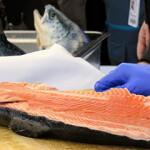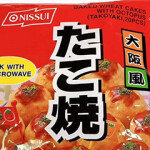Alaska pollock producers double down on marketing efforts

Alaska pollock producers know they turn out a healthy, sustainable, and abundant protein source with a relatively small carbon footprint. Now, they are hoping new marketing efforts will expose more households to the virtues of wild Alaska pollock and dramatically increase consumption of the fish.
The Alaska pollock fishery is the largest by volume in the United States, scooping up an average harvest of around 1.3 million metric tons over the past three decades. A largely consistent stock, the total allowable catch (TAC) for 2019 is 1.4 billion metric tons.
At the first-ever annual meeting of Genuine Alaska Pollock Producers (GAPP) in Seattle, Washington, U.S.A. on Tuesday, 29 October, industry professionals gathered to discuss how to move the fish to the forefront of discussions surrounding the global protein shortage.
To take on that task, GAPP CEO Craig Morris, who took over the revamped organization nine months ago, turned to communications consultancy Ketchum.
Mary Elizabeth Germaine, the head of Ketchum’s global research and analytics division, said previous efforts to brand “Wild Alaska Pollock” seem to have taken hold.
“Wild Alaska pollock has strong name recognition. Eighty percent of consumers recognize the name… We debunked this myth that nobody really knows who you are. You are starting with an opportunity because there’s great brand equity simply in the name wild Alaska pollock,” Germaine said.
The U.S. Congress advanced name recognition in 2016 when it mandated that the “Wild Alaska Pollock” brand could only be applied to fish caught in Alaska waters, a move to separate the fish from lower-quality competitors. Experts said pollock from China and Russia – which is often frozen twice and contains additives – mingled with Alaska pollock, which is frozen once shortly after harvest and contains no additives. The lack of clear branding contributed to a 40 percent reduction in Alaska pollock consumption from 2007 to 2014, according to GAPP data, and the price margin over Chinese and Russian pollock narrowed.
The market separation provided by name recognition is beneficial, Germaine said, but surveys revealed that consumers did not have a sense of the story behind wild Alaska pollock.
Ketchum gave people a brief paragraph on wild Alaska pollock that described the meat as a mild, flakey, heart-healthy protein source, and explained the fish was sustainably sourced, wild-caught, and frozen once shortly after harvest in the “icy waters” of the Bering Sea.
“You have roughly 25 to 30 percent of consumers who will buy wild Alaska pollock just on the name alone. You start telling the story around it, and that jumps to nearly 50 percent. That’s a huge increase simply from introducing all the things this product stands for,” Germaine said, concluding that clear, consistent messaging of this story could be key to future marketing.
The main target market, Germaine said, are affluent, educated millennials with strong purchasing power who are not only health-conscious but also concerned about the impact their food has on the environment.
To that end, GAPP has also hired environmental consulting firm Quantis to assess the total impact of pollock production, from fishing to packaged fillets. The full Quantis report will not be finished until next summer, but Bryan Sheehan, the U.S. director for Quantis, said early estimates show carbon emissions for pollock to be far lower than leading terrestrial proteins like chicken, beef, and pork.
“We do see a kind of an order of magnitude difference where we would anticipate – on a global warming basis, there are other factors we will look at as well – that wild Alaska pollock will probably come in around two or less kilograms of carbon per kilogram of wild Alaska pollock,” Sheehan said. “Other forms of protein like pork and chicken are in that five- to 10-[kilogram] range, and beef is in the 25 to 30 range.”
Sharon Ripps, a consumer trend, beverage and luxury brand strategist at R3 Consulting, said all this careful, wide-ranging analytical work is important because part of the target market is not likely to be fooled by “greenwashing,” or efforts to make products seem more environmentally friendly than they are.
“They think about sustainability very broadly. It’s not just about the catch, but it’s the fish and how it goes through its entire life cycle until it ends up on their plate. Things like: Is it in plastic? What surrounds the fish? Is what surrounds the fish as sustainable as the fish itself,” Ripps said.
She added that trust can set in motion its own consumer-driven marketing campaign driven by influencers as well as base consumers.
“They are very vocal. If you’re transparent and honest about it, they will talk you up. But if you fall short, they will also make that very clear on social media,” Ripps said.
To help aid in their marketing push, GAPP also introduced a new website at the conference in Seattle. The website, designed by the Garrigan Lyman Group, will be the organization’s primary vehicle to help spread the story of wild Alaska pollock to more consumers.
Photo courtesy of Dan Lamont/Tatoosh Media






Share